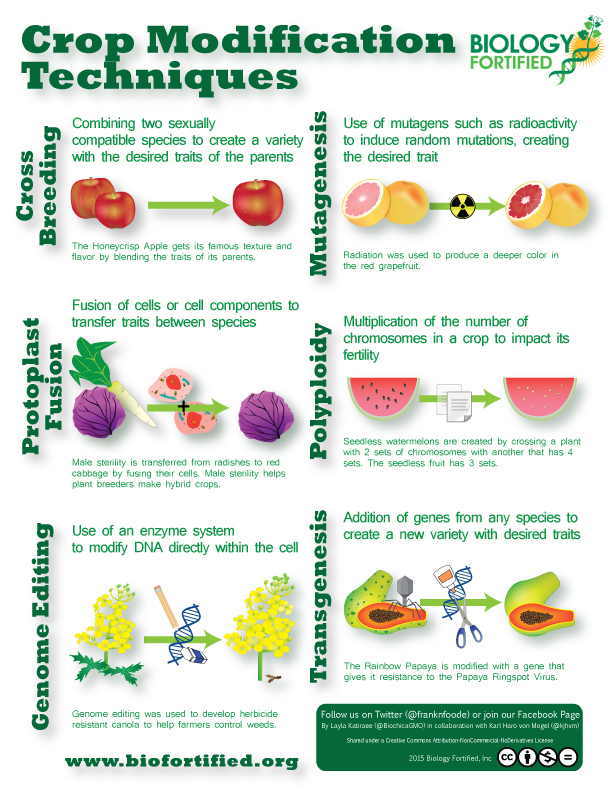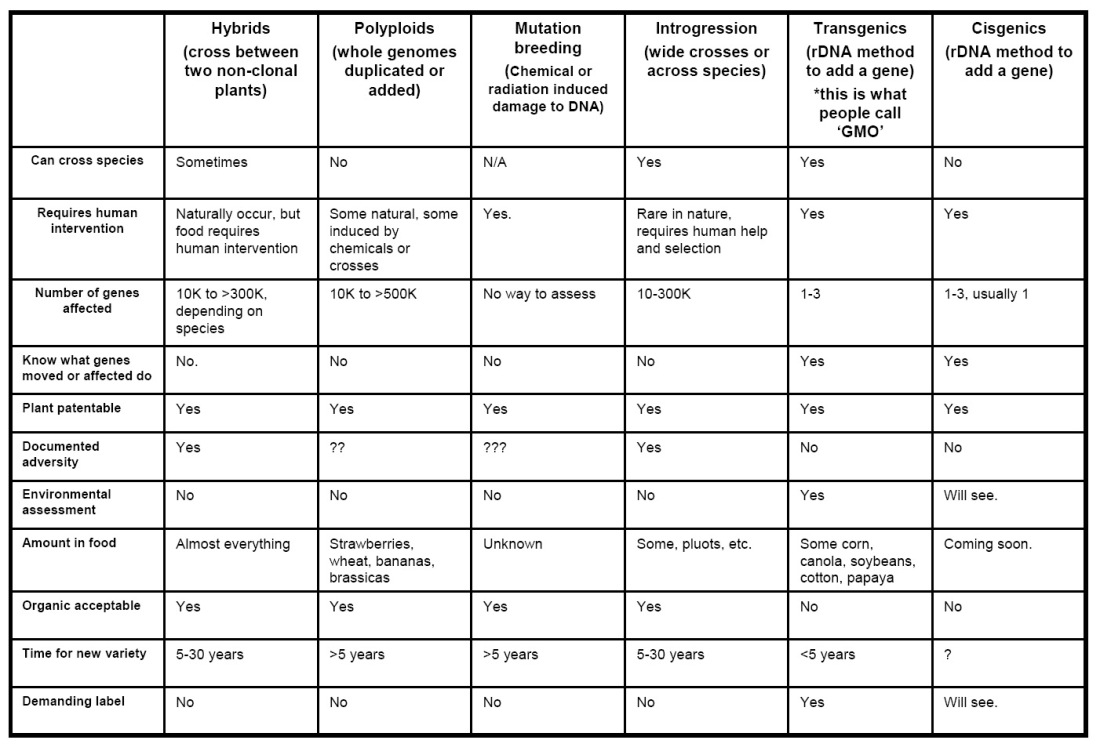To help educate people about the many methods that are used to generate new traits in plants, Biology Fortified has created an infographic on six different crop modification techniques, with examples of crops generated with each method.
This infographic was made by Layla Katiraee together with Karl Haro von Mogel and we hope that it will be the first of many graphics that Biology Fortified will develop to help people understand and relate to the science!
Visit the Crop Modification Techniques Infographic Page for descriptions of each breeding method and for multiple download options for this infographic.
We are providing these graphics for non-profit educational use by anyone, in multiple formats. Please attribute them to us when you use them, and do not modify them without the permission of Biology Fortified, Inc.

Thanks heaps for your efforts. This is a valuable resource for all science communicators.

Some 4 years ago @KevinFolta published a tabulation that I’ve found instructive. One characteristic in particular resonates with some people that I’ve shown Kevin’s chart is ‘the number of genes affected’ by each technique.
LikeLike
It’s a fantastic table. GMOanswers put together an edited version here: https://gmoanswers.com/sites/default/files/GTK-GMO-Seed-Improvement.pdf
LikeLike
Thanks heaps Layla – I didn’t know about the GMOanwers version. It is more accessible and I hope widely used. At some point do you think they need to add gene editing (ala CRISPR)?
An important contribution of the Biofortified team is the associated concise background. If I were a teacher I would want posters as well as slides.
LikeLike
All well and good. Except…
This idea that we’ll bring people to biotech as long as we avoid counter-attacking the political organic movement is naïve. Yes, organics and biotech should be interwoven. But they cannot be under the current system established by anti-GMO organic activists.
Facts don’t always speak for themselves. And nice guys quite often finish last.
LikeLike
Many thanks for your interesting article. Biotechnology in general and GMO in particular is gaining the attention of many countries around the world, including Vietnam. I also started with a small project on biotechnology microorganisms in South Vietnam.
My project address is http://www.chungvisinh.com/
LikeLike
Which techniques (other than cross breeding) are used in organic agriculture?
LikeLike
You can find the information in this table: http://kfolta.blogspot.com/2012/06/more-frankenfood-paradox.html
LikeLike
There was actually an interesting story about this when some county was running an initiative to ban GMOs. A biology professor explained how many of the things that were included in the GMO definitions are actually things widely used by organic farmers. Even the USDA is struggling with this.
http://lostcoastoutpost.com/2014/oct/14/heres-why-you-should-vote-against-measure-p-even-i/
LikeLike
That’s something I don’t understand about the labeling initiatives and organic standards. Often times, when discussing the topic with someone and pointing out that mutagenesis generates more undesired consequences than transgenesis, the individual will respond that they think that mutagenics should also be labeled and shouldn’t be under the USDA’s organic label, or that labeling transgenics is “the first step” and “we’ll worry about mutagenic crops next”. But no one seems to include mutagenesis in their “right to know” campaigns. If they truly believed that mutagenesis should also be labeled, why not write an all-inclusive bill listing everything that should be labeled, rather than doing it in a phased approach?
LikeLike